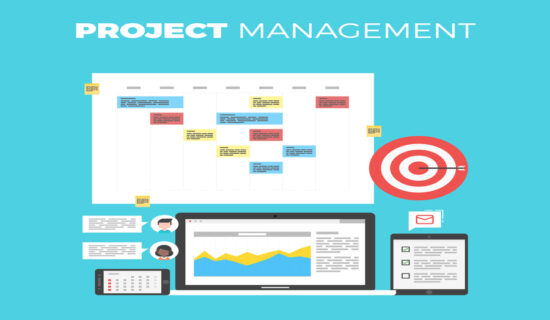
Employers can use employer branding as an effective tool to attract top talent. In addition to building the employer brand, it also helps to establish a distinctive corporate culture that represents the company’s principles to the outside world. The reason why potential applicants choose your company over the competition depends on how they perceive your branding. But how does successful employer branding work in the digital age? We give you the answers in this article.
What is employer branding?
Employer branding is the establishment of an employer brand. This strengthens the value and reputation of the company.
However, effective employer branding is not a patent remedy that works for every company. Rather, it is made up of a variety of components that are layered on top of each other. These include developing a distinct brand that sets the company apart from its competitors and a narrative that embodies the company’s goals and values.
The idea therefore goes far beyond creating a memorable logo or slogan. A job advertisement, a company’s image and website design, recruitment and onboarding are all part of the employer branding process.
Similar to a cogwheel, all parts work together to form a logical whole. The goal of employer branding is to convey a positive impression of the organization as an employer. It should entice potential applicants to apply to you by being compelling and appealing. As the best workers generally seek out the best companies, this also increases the quality of applications.

The benefits of employer branding
The most obvious benefit of employer branding is that it helps to attract top talent. Anyone who has attended an elite university or training center knows that the best candidates are attracted to strong employers. Establishing an employer brand increases the success rate of hiring new employees and saves companies a lot of time and money. The overall success of a company is increased by the high level of productivity and willingness to work that good employees bring to the company.
In addition to the many benefits of making the company more attractive to potential employees, employer branding also helps to improve the public perception and reputation of the company. Standing out from the competition and having a strong employer brand gives you a clear competitive advantage in the market.
Developing an employer branding strategy
These are some pointers for developing an employer branding strategy, which also requires thorough preparation and implementation once the benefits of employer branding have been demonstrated.
First of all, it is important to find the right candidate for the company. For this reason, companies should think about the qualities and skills they are looking for in potential recruits and the type of workplace they want to create. The employer brand and suitable applicants are thus matched. The next step is to create an employer brand. It should contain a concise summary of the company’s goals, values and mission. The company’s background must be convincing and relevant to the target group.
The final step is to create an eye-catching company website and associated content. This also applies to recruitment materials, job advertisements and other forms of communication.
Our agency specializes in employer branding and takes care of branding and logo creation, among other things. Get in touch with us if you are looking for a reputable web agency in Lüneburg to help you make your company more attractive to potential employees.

What is the function of an employer brand story?
In an employer brand story, the goal, vision and values of a company are presented briefly and succinctly. It must not only be authentic, but also convincing and tailored to the company’s target market. A list of your key principles will help you stay on track during the recruitment process and when making personnel decisions. It is also beneficial to highlight your achievements and successes, as top talent prefers to work with companies that have a strong employer brand.
Once this step is complete, you can begin optimizing the website, which includes all the important core components, and writing the employer branding narrative. Job postings, recruitment materials and other correspondence should be included. Other content, such as videos, is also acceptable. Text, images and videos are examples of multimedia content that lend themselves well to an employer brand narrative. Content that answers the questions of potential applicants while being attractive and educational is particularly beneficial to the plan. The company’s mission, beliefs and culture can be integrated into the content to create a distinctive brand that attracts qualified applicants.
Additional tip:
Employer branding on social media
Using social media as a key employer branding tool is an additional piece of advice. Here, too, you can advertise your own employer brand and get in touch with potential applicants. Posting job vacancies on social media is a good way to drive more traffic to the application website over time. In addition, you can make a good impression by interacting with potential applicants through comments and messages, maintaining a positive employer image and so on.

Use social media to promote the employer brand
Calculate the effectiveness of the employer branding campaign.
Contrary to the common misconception that branding metrics are impractical, employer branding is quantifiable. Here you can evaluate the effectiveness of the selected measures by tracking key performance indicators (KPIs) such as the number of applicants for your vacancies or the quality of these applicants. In this way, the effectiveness of the employer branding strategy can be better assessed and improved if necessary.
Contact us now if you need help implementing an effective employer branding website and advertising campaign.

